 At the 1962 Open House held at the Massachusetts Institute of Technology, a student programming project is unveiled on the school’s new DEC PCP-1 computer. In an attempt to demonstrate the machine’s real-time processing power in a context that can be understood by the general public, Steve Russell and his cohorts allow visitors to play the first computer game, Spacewar. The product of months of design and hundreds of man-hours of coding, Spacewar allows two players to navigate their way around the gravity of a sun while trying to blow each other to bits (as displayed on a round oscilloscope). Never patented or copyrighted, Spacewar goes on to “inspire” countless copies, including one of the earliest coin-operated arcade video games, Computer Space.
At the 1962 Open House held at the Massachusetts Institute of Technology, a student programming project is unveiled on the school’s new DEC PCP-1 computer. In an attempt to demonstrate the machine’s real-time processing power in a context that can be understood by the general public, Steve Russell and his cohorts allow visitors to play the first computer game, Spacewar. The product of months of design and hundreds of man-hours of coding, Spacewar allows two players to navigate their way around the gravity of a sun while trying to blow each other to bits (as displayed on a round oscilloscope). Never patented or copyrighted, Spacewar goes on to “inspire” countless copies, including one of the earliest coin-operated arcade video games, Computer Space.

 In a hand-written design document, Ralph Baer, an engineer working for defense contractor Sanders Associates, sketches out his ideas for a device he calls a TV Gaming Display. The design proposal lays out a concept to take television from being a passive form of entertainment to an interactive one in which two players can manipulate simple on-screen displays to play various games. Management at Sanders recognizes the potential of the invention, and Baer proceeds with development of the first video game prototypes, one of which becomes the basis for the first home video game console, the
In a hand-written design document, Ralph Baer, an engineer working for defense contractor Sanders Associates, sketches out his ideas for a device he calls a TV Gaming Display. The design proposal lays out a concept to take television from being a passive form of entertainment to an interactive one in which two players can manipulate simple on-screen displays to play various games. Management at Sanders recognizes the potential of the invention, and Baer proceeds with development of the first video game prototypes, one of which becomes the basis for the first home video game console, the 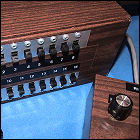 At Sanders Associates, Ralph Baer completes the sixth iteration of his recently-patented Television Gaming & Training Apparatus, now covered in brown woodgrain and called “The Brown Box.” Utilizing logic circuits and spot generators rather than a computer chip, the Brown Box is capable of playing video ping pong and other simple games. This is the prototype of the first mass-marketed home video game system. Sanders begins courting prospective licensees, including RCA, Zenith, General Electric, Motorola and Magnavox; companies already manufacturing television sets will be the corporate entites most likely to show an interest. RCA declines, but one of its executives, having seen the Brown Box demonstrated, later defects to Magnavox, which eventually licenses the Brown Box technology from Sanders. The result will be the Magnavox Odyssey, the first-ever home video game console.
At Sanders Associates, Ralph Baer completes the sixth iteration of his recently-patented Television Gaming & Training Apparatus, now covered in brown woodgrain and called “The Brown Box.” Utilizing logic circuits and spot generators rather than a computer chip, the Brown Box is capable of playing video ping pong and other simple games. This is the prototype of the first mass-marketed home video game system. Sanders begins courting prospective licensees, including RCA, Zenith, General Electric, Motorola and Magnavox; companies already manufacturing television sets will be the corporate entites most likely to show an interest. RCA declines, but one of its executives, having seen the Brown Box demonstrated, later defects to Magnavox, which eventually licenses the Brown Box technology from Sanders. The result will be the Magnavox Odyssey, the first-ever home video game console. Boasting a curved, futuristic fiberglass cabinet that truly looks like an alien art object, Nutting Associates’ arcade video game
Boasting a curved, futuristic fiberglass cabinet that truly looks like an alien art object, Nutting Associates’ arcade video game  Two recent college graduates in California install
Two recent college graduates in California install  In Santa Clara, California, Atari is formed by Nolan Bushnell and Ted Dabney. The company is initially part of Bushnell’s desire to continue competing in the coin-operated game market, where he believes video games can take part of the market share from pinball, but consumer products are not far from Bushnell’s mind either: two weeks before Atari’s incorporation, he attends a Magnavox product fair and gets a first-hand look at the first home video game console.
In Santa Clara, California, Atari is formed by Nolan Bushnell and Ted Dabney. The company is initially part of Bushnell’s desire to continue competing in the coin-operated game market, where he believes video games can take part of the market share from pinball, but consumer products are not far from Bushnell’s mind either: two weeks before Atari’s incorporation, he attends a Magnavox product fair and gets a first-hand look at the first home video game console.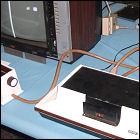 American television manufacturer
American television manufacturer  Atari releases its first product, the arcade game
Atari releases its first product, the arcade game 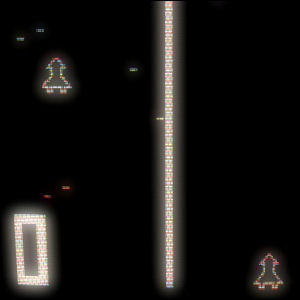 Atari releases its second arcade game: the very first video racing game,
Atari releases its second arcade game: the very first video racing game, 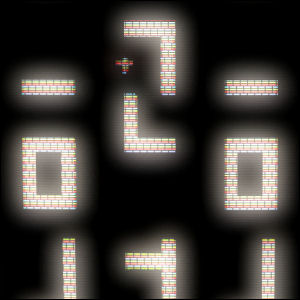 Atari releases its fourth arcade game: the very first video maze game,
Atari releases its fourth arcade game: the very first video maze game,  Atari releases
Atari releases  “Kee Games” (a shell company created by Atari founder Nolan Bushnell) introduces a new arcade game, a video war between two artillery commanders called
“Kee Games” (a shell company created by Atari founder Nolan Bushnell) introduces a new arcade game, a video war between two artillery commanders called  Alpex Corporation, an American computer company, files “the ‘555 Patent” for a “television display control apparatus” capable of loading software from ROM chips embedded in swappable cartridges and other media. This patent effectively shifts the infant video game industry from a hardware-based model to a software-based model, and is licensed by Fairchild Semiconductor for the first cartridge-based video game, the Fairchild Video Entertainment System (later known as Channel F), a year later; the resulting sea change forces a sudden reassessment in the R&D departments at Atari and Magnavox, among others. Due to the remarkably broad nature of patent #4026555, Alpex will be able to take nearly every video game manufacturer to court to force them to license the technology from Alpex through the early ’90s. The first major challenge to Alpex’s patent will come from Nintendo in 1986, a case that will eventually make its way to the U.S. Supreme Court in 1997 – by which time Alpex will go bankrupt pursuing the case.
Alpex Corporation, an American computer company, files “the ‘555 Patent” for a “television display control apparatus” capable of loading software from ROM chips embedded in swappable cartridges and other media. This patent effectively shifts the infant video game industry from a hardware-based model to a software-based model, and is licensed by Fairchild Semiconductor for the first cartridge-based video game, the Fairchild Video Entertainment System (later known as Channel F), a year later; the resulting sea change forces a sudden reassessment in the R&D departments at Atari and Magnavox, among others. Due to the remarkably broad nature of patent #4026555, Alpex will be able to take nearly every video game manufacturer to court to force them to license the technology from Alpex through the early ’90s. The first major challenge to Alpex’s patent will come from Nintendo in 1986, a case that will eventually make its way to the U.S. Supreme Court in 1997 – by which time Alpex will go bankrupt pursuing the case.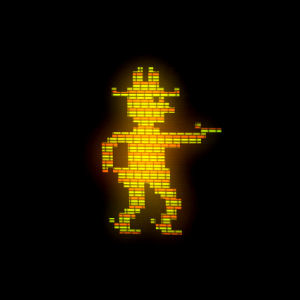 American game manufacturer Midway releases
American game manufacturer Midway releases  Atari gets firmly into the swing of the ’70s with a rare foray into the non-game-related consumer electronics market.
Atari gets firmly into the swing of the ’70s with a rare foray into the non-game-related consumer electronics market.  Atari introduces
Atari introduces  Coleco, a toy company best known for its air hockey tables, releases its first video game console, the Coleco Telstar. A self-contained unit capable of playing three variants of video tennis, Telstar retails for roughly half the price of Atari’s Pong console, and Coleco sells over a million units of Telstar in various guises and case styles through the end of the decade. In the early 1980s, Coleco begins development of its own programmable, cartridge-based successor to Telstar, which will reach the market in 1982 as Colecovision.
Coleco, a toy company best known for its air hockey tables, releases its first video game console, the Coleco Telstar. A self-contained unit capable of playing three variants of video tennis, Telstar retails for roughly half the price of Atari’s Pong console, and Coleco sells over a million units of Telstar in various guises and case styles through the end of the decade. In the early 1980s, Coleco begins development of its own programmable, cartridge-based successor to Telstar, which will reach the market in 1982 as Colecovision.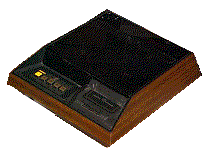 A major breakthrough in an industry that was previously dominated by expensive, bulky consoles that could only play a handful of games each, Fairchild introduces its Video Entertainment System, the first programmable video game system. Though it has several built-in games like its predecessors, the Fairchild system allows owners to add new games by purchasing “Videocarts” – roughly the size of 8-track tapes – containing additional games. Fairchild later renames its VES console Channel F to avoid market confusion with Atari’s VCS (Video Computer System), which doesn’t arrive on the scene until the following year.
A major breakthrough in an industry that was previously dominated by expensive, bulky consoles that could only play a handful of games each, Fairchild introduces its Video Entertainment System, the first programmable video game system. Though it has several built-in games like its predecessors, the Fairchild system allows owners to add new games by purchasing “Videocarts” – roughly the size of 8-track tapes – containing additional games. Fairchild later renames its VES console Channel F to avoid market confusion with Atari’s VCS (Video Computer System), which doesn’t arrive on the scene until the following year.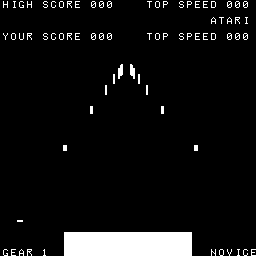 Atari introduces its first-person driving game
Atari introduces its first-person driving game  Midway introduces its own first-person car racing arcade game,
Midway introduces its own first-person car racing arcade game,  One of the very first first-person space games is introduced to arcades by Atari. Despite its flickery graphics,
One of the very first first-person space games is introduced to arcades by Atari. Despite its flickery graphics,  Launched just prior to Christmas 1976 (so late, in fact, that most consumers aren’t aware of its existence until early ’77), RCA takes its only step into the video game world with the underpowered
Launched just prior to Christmas 1976 (so late, in fact, that most consumers aren’t aware of its existence until early ’77), RCA takes its only step into the video game world with the underpowered  Atari releases
Atari releases 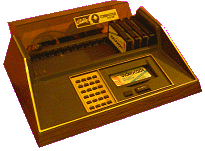 Bally introduces the
Bally introduces the 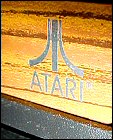 The
The 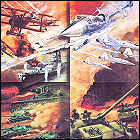 Atari releases
Atari releases 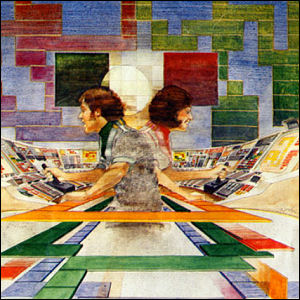 Atari releases
Atari releases